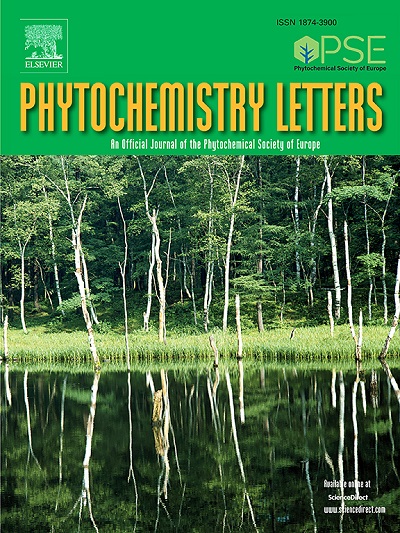民族植物药黑枸杞野生果实和栽培果实的植物化学差异
IF 1.3
4区 生物学
Q4 CHEMISTRY, MEDICINAL
引用次数: 0
摘要
枸杞(Lycium ruthenicum Murr.(枸杞(Lycium ruthenicum Murr)是中国西北地区一种著名的药用和食用植物,富含生物活性化合物。然而,人们对野生枸杞与栽培枸杞之间的植物化学和代谢差异还不甚了解。本研究利用非靶向代谢组学揭示了野生萝芙木与栽培萝芙木在代谢物积累方面的差异。代谢组学结果共鉴定出 466 种代谢物,其中 153 种呈现出差异积累。这些差异代谢物主要富集在与次生代谢物生物合成、苯丙类生物合成以及精氨酸和脯氨酸代谢相关的途径中。与野生 LR 相比,栽培 LR 含有更高水平的黄酮类化合物、氨基酸及其衍生物、脂类、核苷酸及其衍生物、木脂素、香豆素和单宁酸。相反,野生 LR 中大多数酚酸、生物碱、有机酸和萜类化合物的含量明显高于栽培 LR。由于两个种植区的土壤成分存在明显差异,野生和栽培鳞茎果实中黄酮类化合物和酚酸的积累也存在差异,这表明生长过程中的土壤条件可能会影响其代谢物水平。因此,对野生和栽培鳞茎果实代谢物的探索为农业育种和栽培提供了新的视角,并支持对其品质形成和评价的进一步研究。本文章由计算机程序翻译,如有差异,请以英文原文为准。
Phytochemical differences in wild and cultivated fruits of the ethnobotanical medicine black wolfberry (Lycium ruthenicum)
Lycium ruthenicum Murr. (LR) is a notable medicinal and edible plant from Northwest China, rich in bioactive compounds. However, the phytochemical and metabolic differences between wild and cultivated LR are not well understood. This study used untargeted metabolomics to reveal the differences in metabolite accumulation between wild and cultivated LR. Metabolomics results identified a total of 466 metabolites, with 153 showing differential accumulation. These differential metabolites were predominantly enriched in pathways related to secondary metabolite biosynthesis, phenylpropanoid biosynthesis, and arginine and proline metabolism. Cultivated LR contained higher levels of flavonoids, amino acids and derivatives, lipids, nucleotides and derivatives, lignans, coumarins, and tannins compared to wild LR. Conversely, wild LR had significantly higher contents of most phenolic acids, alkaloids, organic acids, and terpenoids than cultivated LR. With significant differences in soil composition between the two growing regions, variations in the accumulation of flavonoids and phenolic acids were observed between wild and cultivated LR fruits, indicating that soil conditions during growth likely influence their metabolite levels. Therefore, exploring the metabolites of wild and cultivated LR offers new insights for agricultural breeding and cultivation and supports further research into its quality formation and evaluation.
求助全文
通过发布文献求助,成功后即可免费获取论文全文。
去求助
来源期刊

Phytochemistry Letters
生物-生化与分子生物学
CiteScore
3.00
自引率
11.80%
发文量
190
审稿时长
34 days
期刊介绍:
Phytochemistry Letters invites rapid communications on all aspects of natural product research including:
• Structural elucidation of natural products
• Analytical evaluation of herbal medicines
• Clinical efficacy, safety and pharmacovigilance of herbal medicines
• Natural product biosynthesis
• Natural product synthesis and chemical modification
• Natural product metabolism
• Chemical ecology
• Biotechnology
• Bioassay-guided isolation
• Pharmacognosy
• Pharmacology of natural products
• Metabolomics
• Ethnobotany and traditional usage
• Genetics of natural products
Manuscripts that detail the isolation of just one new compound are not substantial enough to be sent out of review and are out of scope. Furthermore, where pharmacology has been performed on one new compound to increase the amount of novel data, the pharmacology must be substantial and/or related to the medicinal use of the producing organism.
 求助内容:
求助内容: 应助结果提醒方式:
应助结果提醒方式:


